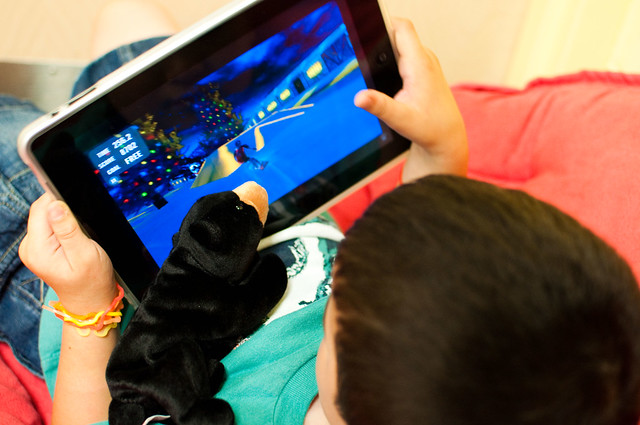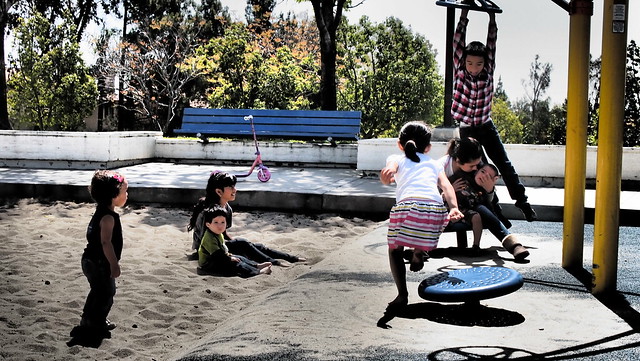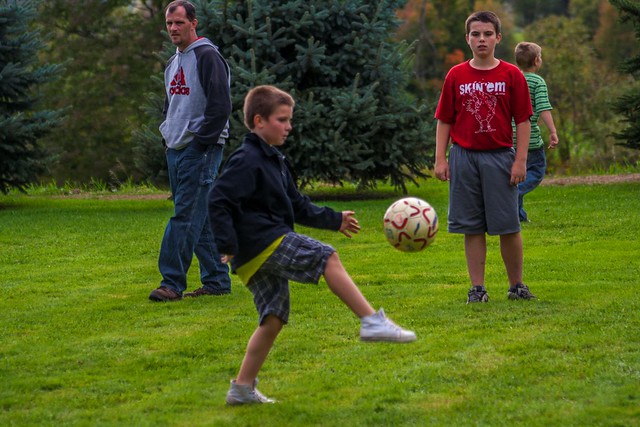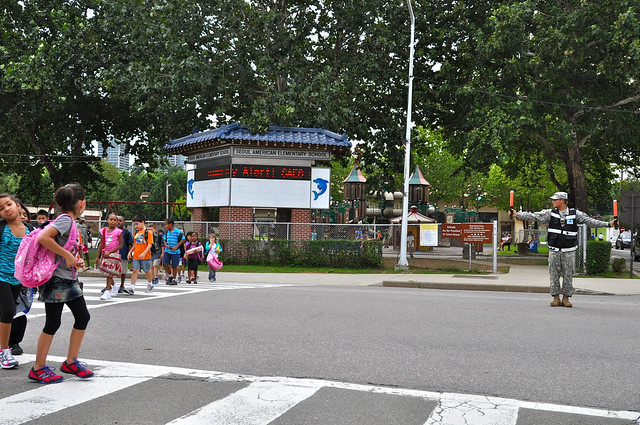Why Active Play is Necessary in Making Kids Healthier
It’s a disturbing trend – more and more kids prefer to stay indoors to play video games or spend an unhealthy amount of time on the Internet. Those days when children would gladly do anything just to go outside for active play are almost gone.
| Too much game time can be unhealthy. Melanie Holtzman via Flickr, Creative Commons |
While it can be said that video games and the Internet can contribute to the mental development of your child, it can also take its toll on his/her physical and social health in the long run. Kids who stay inside the house most of the time tend to develop shyness problems and other issues when dealing with other children.
More than ever, parents should be encouraging their kids to engage in active play with their peers. Old-school active play for children is not only a great way for the young ones to become healthy; it is also a safe and sustainable way for them to have fun with their friends.
Health Risks of Physical Inactivity
The top health risk of inadequate physical activity is obesity. Kids who don’t get enough exercise due to lack of regular play time may develop problems in keeping off the unwanted pounds. Overweight kids are more prone to conditions such as joint sprains, flat feet, and asthma.
According to the Institute of Medicine of the National Academy of Sciences, lack of physical activity makes the children more likely to develop serious diseases in the future, conditions such as diabetes, heart disease, colon and breast cancer and high blood pressure. Overweight kids as young as 15 years of age can already exhibit warning signs for these conditions.
Kids who lack physical exercise are also prone to social and emotional problems. Obese children have a hard time keeping up with other children during playtime or sports activities. Overweight teenagers, on the other hand, may grow to hate their appearance. These factors can make them feel insecure and depressed about themselves.
The Importance of Active Play
Regular involvement in active play can help immensely in developing healthy habits of your child. Your kid can enjoy the following benefits of active play:
- Healthy and stable weight
- Less chances of developing chronic diseases
- Development of strong muscles and bones
- Better posture
- Less stress and anxiety
- Enhanced creativity as a result of playing “pretend” during active play
- Stronger self-confidence. Children who are physically fit are more competitive during active play, which can make them feel good about themselves.
| Playing kids are happy, healthy kids. Ian D. Keating via Flickr, Creative Commons |
Raising an Active Child
Educating your child to become active and fit starts at home. For starters, make active play fun for the entire family. You can do this by letting your kid participate in coming up with active play ideas. Make sure that your activities will focus on having fun rather than the performance itself; children are more encouraged when they are having fun.
Playgrounds and other activity spots made for active play can provide fun your child needs without compromising safety. If you’re interested in building your own active play area for your kid, PlaygroundEquipment.com has everything you need for safe playground equipment at affordable prices.
It helps to know the kinds of physical activity that your child can do depending on his age. Two-year olds can usually engage in running, walking, galloping, and swimming with adult supervision. Three-year old kids can start learning how to bike (with training wheels) climb low perches, and kick a ball. By the age of four, kids can swim and skip their way out of an easy obstacle course even without help from adults.
| It's never too early to get physical. LabyrinthX via Flickr, Creative Commons |
Television and computer time tend to eat up a lot of your child’s time, so make sure to set a limit for these. Watching television or playing computer games should be limited to two hours or less daily.
As a parent, you should set an example for your kid. Limit your television time and engage in physical activities as well. If your kid can see that you are walking the talk, he/she will be more inclined to follow what you’re preaching. Make sure to use safety gear while you’re at it.
Get the School Involved in Making Kids Active
It’s a sad fact: Not all schools prioritize physical education in their curriculum. The nature of school activities has made students sedentary for majority of the school year.
There are schools that cut the time for physical education classes and breaks (recess, lunch) to make more time for what they deem as more important subjects, like science and math. Also, not all states in the U.S. have laws that require students to meet a certain amount of physical education units.
Since your child spends majority of his time at school, it’s important that teachers and principals cooperate with the parents to encourage children to become more active.
Parents should have the initiative to ask the school authorities about the initiatives that are being done in making sure that children are receiving the amount of physical activity they need everyday. Also, you should work together with other parents to create and implement a plan with the school officials on how to promote physically active play for children.
Making Active Play and Physical Activity Safe for Your Kid
While you’re at it, why not enlist the help of communities, local governments, and urban planners for your cause? Parents will feel more comfortable making their kids walk their way to school if the routes are safe from vehicular traffic.
| The community should do its part in keeping children active and safe. U.S. Army Garrison Yongsan via Flickr, Creative Commons |
Urban planners can be encouraged to construct paths and sidewalks that lead directly from the neighborhood to the school. Local governments can create policies that will encourage new schools to be built in residential neighborhoods, making it easier for kids to travel safely.
The U.S. Department of Education can also help with your cause. It is within the Department’s responsibilities to make physical education an important subject in school. They can also be encouraged to make sure that all schools have enough opportunities and facilities for various physical activities.
With these said, the quest to a healthier lifestyle for the next generation of kids is up and running. How have you contributed to winning this game, so far?
Written by: Ben Thompson





